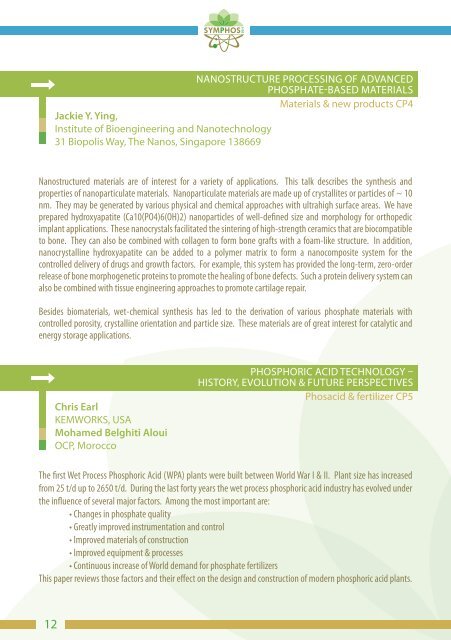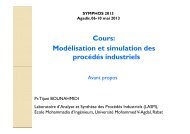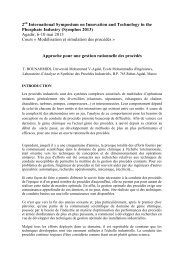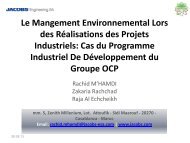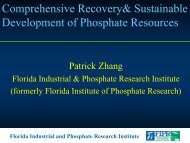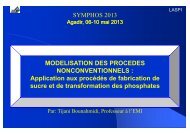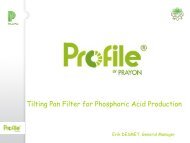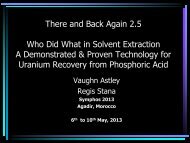Abstract SYMPHOS 2011
Abstract SYMPHOS 2011
Abstract SYMPHOS 2011
You also want an ePaper? Increase the reach of your titles
YUMPU automatically turns print PDFs into web optimized ePapers that Google loves.
NANOSTRUCTURE PROCESSING OF ADVANCED<br />
PHOSPHATE-BASED MATERIALS<br />
Materials & new products CP4<br />
Jackie Y. Ying,<br />
Institute of Bioengineering and Nanotechnology<br />
31 Biopolis Way, The Nanos, Singapore 138669<br />
Nanostructured materials are of interest for a variety of applications. This talk describes the synthesis and<br />
properties of nanoparticulate materials. Nanoparticulate materials are made up of crystallites or particles of ~ 10<br />
nm. They may be generated by various physical and chemical approaches with ultrahigh surface areas. We have<br />
prepared hydroxyapatite (Ca10(PO4)6(OH)2) nanoparticles of well-defined size and morphology for orthopedic<br />
implant applications. These nanocrystals facilitated the sintering of high-strength ceramics that are biocompatible<br />
to bone. They can also be combined with collagen to form bone grafts with a foam-like structure. In addition,<br />
nanocrystalline hydroxyapatite can be added to a polymer matrix to form a nanocomposite system for the<br />
controlled delivery of drugs and growth factors. For example, this system has provided the long-term, zero-order<br />
release of bone morphogenetic proteins to promote the healing of bone defects. Such a protein delivery system can<br />
also be combined with tissue engineering approaches to promote cartilage repair.<br />
Besides biomaterials, wet-chemical synthesis has led to the derivation of various phosphate materials with<br />
controlled porosity, crystalline orientation and particle size. These materials are of great interest for catalytic and<br />
energy storage applications.<br />
12<br />
Chris Earl<br />
KEMWORKS, USA<br />
Mohamed Belghiti Aloui<br />
OCP, Morocco<br />
PHOSPHORIC ACID TECHNOLOGY –<br />
HISTORY, EVOLUTION & FUTURE PERSPECTIVES<br />
Phosacid & fertilizer CP5<br />
The first Wet Process Phosphoric Acid (WPA) plants were built between World War I & II. Plant size has increased<br />
from 25 t/d up to 2650 t/d. During the last forty years the wet process phosphoric acid industry has evolved under<br />
the influence of several major factors. Among the most important are:<br />
• Changes in phosphate quality<br />
• Greatly improved instrumentation and control<br />
• Improved materials of construction<br />
• Improved equipment & processes<br />
• Continuous increase of World demand for phosphate fertilizers<br />
This paper reviews those factors and their effect on the design and construction of modern phosphoric acid plants.


